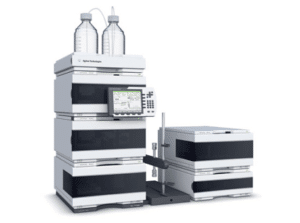
Reverse phase HPLC is more commonly used compared to NP HPLC. This technique can be used to separate, identify and or quantitate components in mixtures of soluble organic components based on their hydrophobicity.
The stationary phase is nonpolar, like C18 bonded silica. The mobile phase is polar, usually being water and polar organic solvent. Compounds with the most hydrophobicity elute later in the chromatogram and those with the least hydrophobicity elute earlier. Isocratic and gradient modes can be used to optimize separation of analytes of interest from matrix components that potentially can interfere with quantitation.




